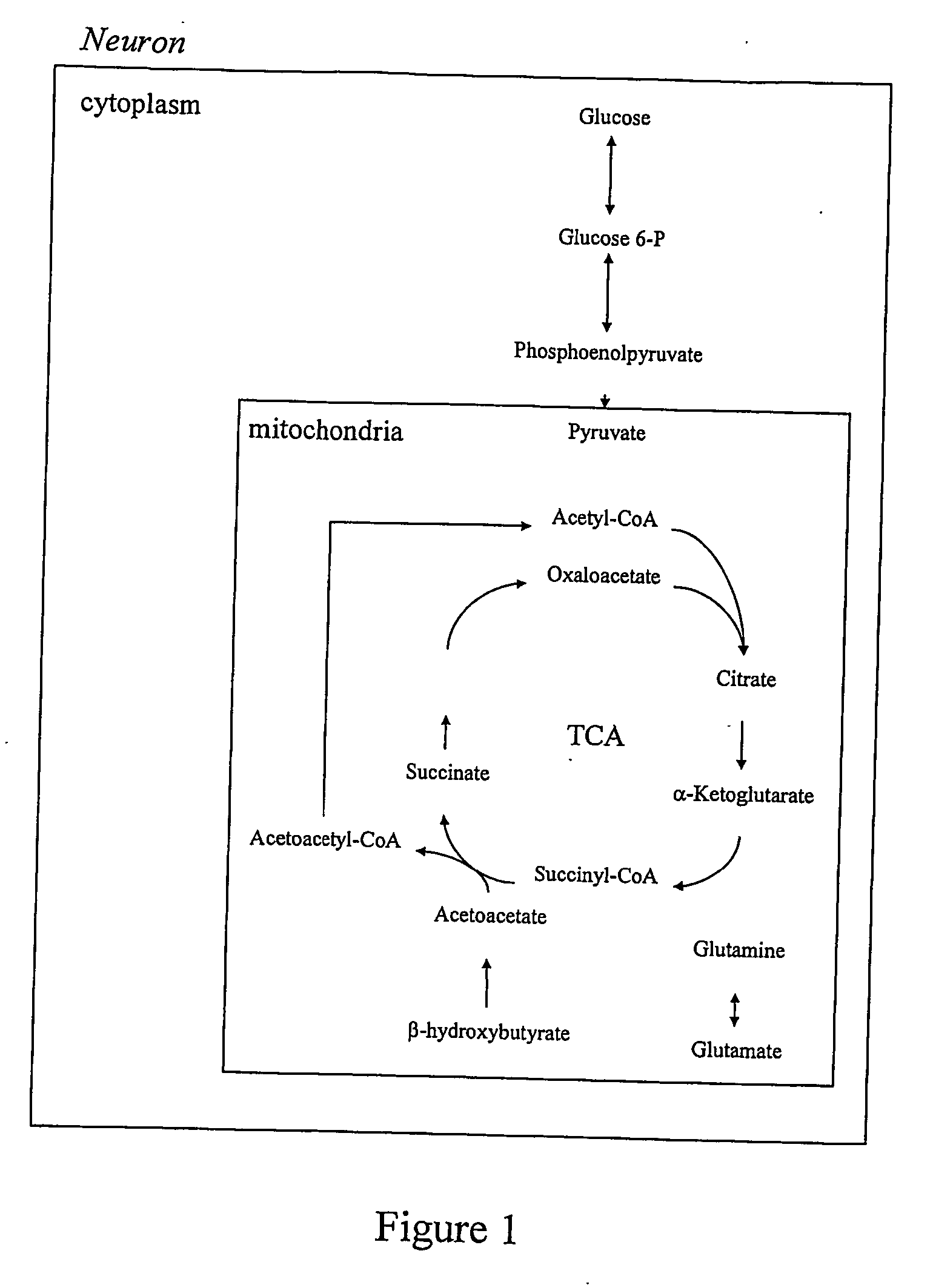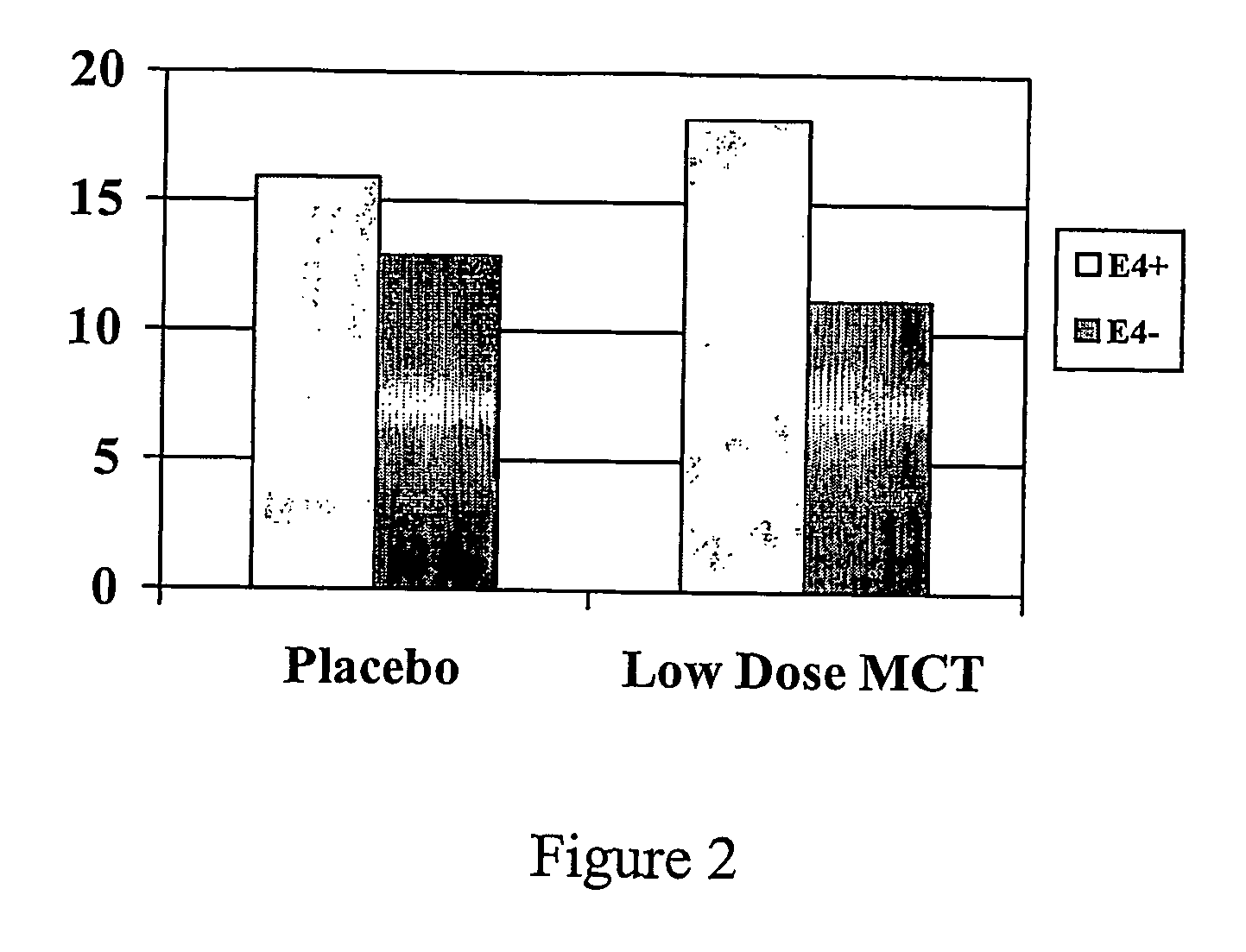Novel chemical entities and methods for their use in treatment of metabolic disorders
a metabolic disorder and chemical entity technology, applied in the field of therapeutic agents, can solve the problems of drug failure to address the underlying pathology, drug compositions that do not have effective prevention or treatment, and additional cognitive functions become impaired, so as to increase cognitive ability, increase ketone body levels, and increase cognitive ability
- Summary
- Abstract
- Description
- Claims
- Application Information
AI Technical Summary
Benefits of technology
Problems solved by technology
Method used
Image
Examples
Embodiment Construction
[0037] The present invention relates to esterified saccharide compounds and compositions suitable for administration to humans and animals which have the properties of, inter alia, (i) increasing cardiac efficiency, particularly efficiency in use of glucose, (ii) providing a source of energy, particularly in diabetes and insulin resistant states and (iii) treating disorders caused by damage to brain cells, particularly by retarding or preventing brain damage in memory associated brain areas such as found in Alzheimer's and similar conditions.
[0038] As described in the Background section, neurons of the brain can use both glucose and ketone bodies for respiration. The neurons of Alzheimer's disease patients have well documented defects in glucose metabolism, and known genetic risk factors for Alzheimer's disease are associated with lipid and cholesterol transport, suggesting defects in triglyceride usage that may underlie susceptibility to Alzheimer's disease. It is therefore an obj...
PUM
| Property | Measurement | Unit |
|---|---|---|
| Structure | aaaaa | aaaaa |
| Ratio | aaaaa | aaaaa |
Abstract
Description
Claims
Application Information
 Login to View More
Login to View More - R&D
- Intellectual Property
- Life Sciences
- Materials
- Tech Scout
- Unparalleled Data Quality
- Higher Quality Content
- 60% Fewer Hallucinations
Browse by: Latest US Patents, China's latest patents, Technical Efficacy Thesaurus, Application Domain, Technology Topic, Popular Technical Reports.
© 2025 PatSnap. All rights reserved.Legal|Privacy policy|Modern Slavery Act Transparency Statement|Sitemap|About US| Contact US: help@patsnap.com



